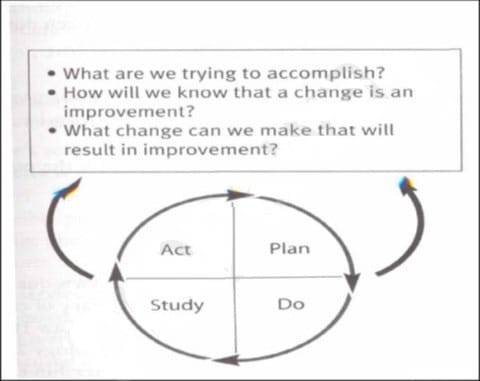Exam Details
Exam Code
:CPHQExam Name
:Certified Professional in Healthcare QualityCertification
:NAHQ CertificationsVendor
:NAHQTotal Questions
:195 Q&AsLast Updated
:Jul 17, 2025
NAHQ NAHQ Certifications CPHQ Questions & Answers
-
Question 151:
The weight of scoring system is based on an emphasis Baldrige places on ___________ and an organization's ability to demonstrate performance and improvement in the following areas:
Product and service outcomes Customer-focused outcomes Financial and market outcomes Workforce-focused outcomes Process effectiveness outcomes Leadership outcomes
A. Results
B. Output
C. System perspective
D. Values
-
Question 152:
Baldrige's scoring system is based on a __________point scale. Each of seven criteria is assigned maximum value ranging from 85 to 450 maximum points.
A. 500 points
B. 1000-point scale
C. 2000-point scale
D. 1500-point scale
-
Question 153:
The Baldrige criteria were originally developed and applied to business; however, in 1997, healthcare-specific criteria were created to help healthcare organizations address challenges such as focusing on core competencies, introducing new technologies, reducing costs, communicating and sharing information electronically new alliance with healthcare providers, and maintaining market advantage. The Baldrige healthcare criteria are built on the set of interrelated core values and concepts.
Which of the following is NOT out of those values and concepts?
A. Focus on the present
B. Valuing of staff and partners
C. Agility
D. Visionary leadership
-
Question 154:
The following diagram shows: A. Baldrige criteria for improvement

B. API Improvement model
C. Quality improvement
D. None of these
-
Question 155:
Quality improvement approaches are derivatives and models of the ideas and theories developed by thought leaders and include all of the following EXCEPT:
A. PDCA/PDSA
B. ISO 2001
C. Baldrige criteria
D. Associate for process improvements
-
Question 156:
Crossby's quality improvement process is based on the Absolutes of Quality Management. Which of the following is/are out of those absolutes?
A. Quality is defined as conformance to requirements, not as goodness or elegance
B. The system for causing quality is prevention, not appraisal
C. The performance standard must be zero defects, not "that's close enough"
D. All of the above
-
Question 157:
TQC is excellence driven rather than defect driven-a system that integrates:
A. Quality development, quality improvement and quality maintenance
B. Quality improvement and quality maintenance
C. Quality development, quality improvement and quality assessment
D. Quality improvement and quality maintenance
-
Question 158:
Overproduction, Inventory, Repairs/rejects, Motion, Processing, Waiting, Transport. These are the types of _____________ identified by Taiichi Ohno.
A. Waste (activities that do not add value to the process)
B. Continuous improvement
C. Quality controls
D. Areas to be focused during production
-
Question 159:
Juran Trilogy includes all the following sub-points under the major heading of quality planning EXCEPT:
A. Identify who the customers are
B. Determine the needs of those customers
C. Develop a process that is able to produce the product
D. Optimize the product feature to meet our needs and customer needs
-
Question 160:
Joseph Juran defined quality as consisting of two different but related concepts. The first form of quality is income oriented and includes features of the product that meet customer needs and thereby produce income (i.e., higher quality costs more).
The second form of quality is cost oriented and emphasizes:
A. Freedom from failures
B. Freedom from deficiencies
C. Knowledge about variation
D. Both A and B
Related Exams:
Tips on How to Prepare for the Exams
Nowadays, the certification exams become more and more important and required by more and more enterprises when applying for a job. But how to prepare for the exam effectively? How to prepare for the exam in a short time with less efforts? How to get a ideal result and how to find the most reliable resources? Here on Vcedump.com, you will find all the answers. Vcedump.com provide not only NAHQ exam questions, answers and explanations but also complete assistance on your exam preparation and certification application. If you are confused on your CPHQ exam preparations and NAHQ certification application, do not hesitate to visit our Vcedump.com to find your solutions here.